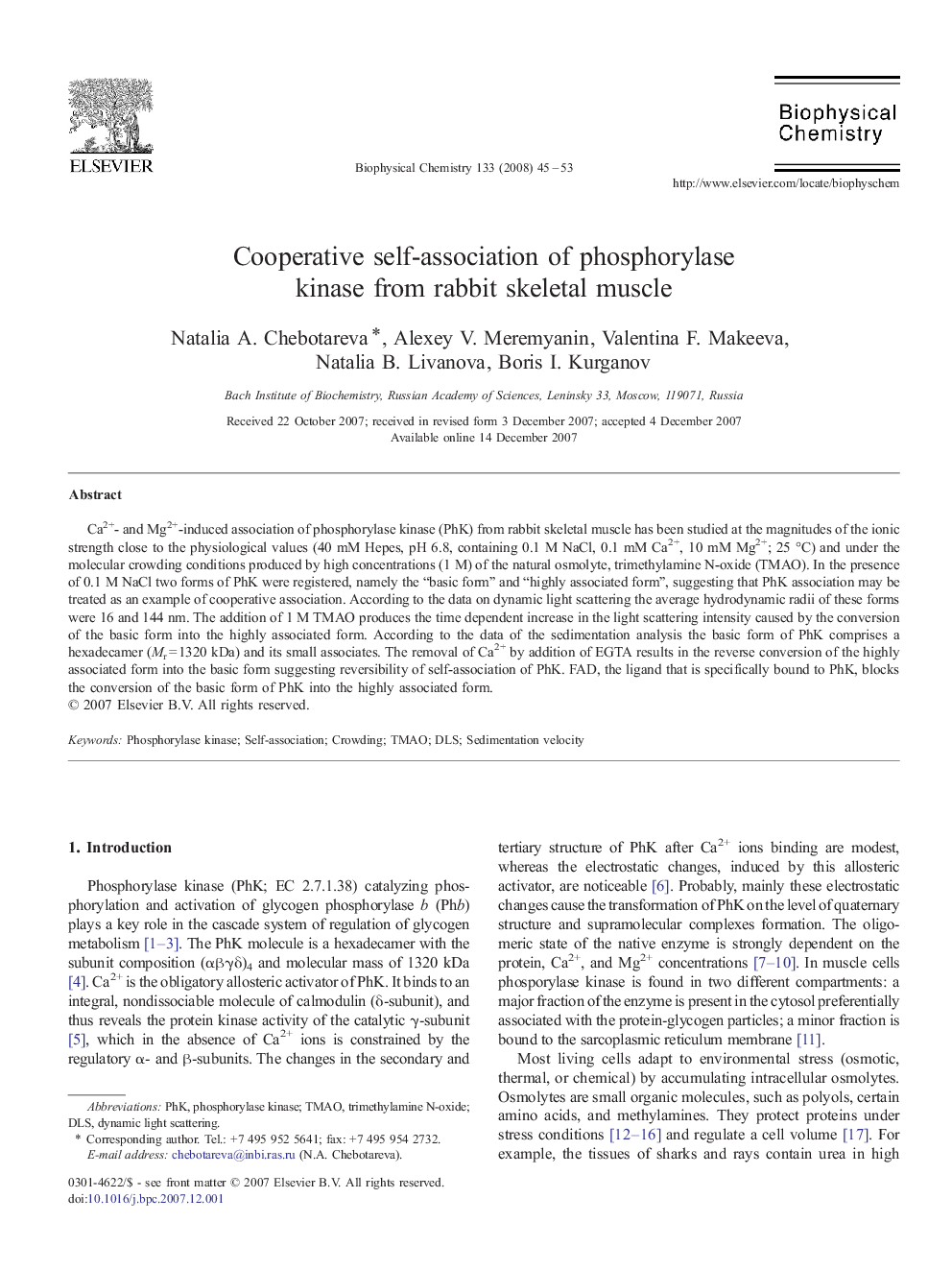| Article ID | Journal | Published Year | Pages | File Type |
|---|---|---|---|---|
| 5372018 | Biophysical Chemistry | 2008 | 9 Pages |
Abstract
Ca2+- and Mg2+-induced association of phosphorylase kinase (PhK) from rabbit skeletal muscle has been studied at the magnitudes of the ionic strength close to the physiological values (40 mM Hepes, pH 6.8, containing 0.1 M NaCl, 0.1 mM Ca2+, 10 mM Mg2+; 25 °C) and under the molecular crowding conditions produced by high concentrations (1 M) of the natural osmolyte, trimethylamine N-oxide (TMAO). In the presence of 0.1 M NaCl two forms of PhK were registered, namely the “basic form” and “highly associated form”, suggesting that PhK association may be treated as an example of cooperative association. According to the data on dynamic light scattering the average hydrodynamic radii of these forms were 16 and 144 nm. The addition of 1 M TMAO produces the time dependent increase in the light scattering intensity caused by the conversion of the basic form into the highly associated form. According to the data of the sedimentation analysis the basic form of PhK comprises a hexadecamer (Mr = 1320 kDa) and its small associates. The removal of Ca2+ by addition of EGTA results in the reverse conversion of the highly associated form into the basic form suggesting reversibility of self-association of PhK. FAD, the ligand that is specifically bound to PhK, blocks the conversion of the basic form of PhK into the highly associated form.
Keywords
Related Topics
Physical Sciences and Engineering
Chemistry
Physical and Theoretical Chemistry
Authors
Natalia A. Chebotareva, Alexey V. Meremyanin, Valentina F. Makeeva, Natalia B. Livanova, Boris I. Kurganov,
